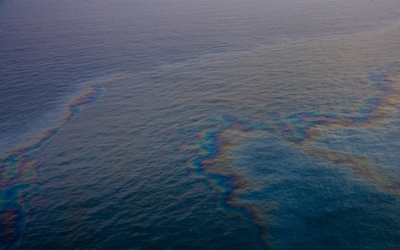It’s pretty rare that molasses makes the news coverage. It’s a thick sugary substance that is used primarily in industrial cooking and food creation. And even if we don’t really know very much about it, we hardly think of it as something that could be a potential hazard. But all that changed recently when 233,000 gallons of the viscous liquid was accidentally spilled just off the coast of Honolulu, Hawaii. The result has been nothing short of chaotic and we are only now starting the see the potential problems that the spill could cause in the long term.
Of course, it was obvious that such a massive spill was not going to be a particularly good thing for marine life in the area, and unsurprisingly we have now seen thousands of animals die as the sticky liquid made it impossible for them to either swim through the water or get the oxygen they need from it. In just a few days, thousands of fish have died around the harbour where the spill occurred and other marine life is suffering too. It’s similar to an oil spill, except that we don’t really have a procedure for how to respond to it, as molasses is naturally very different to oil. You can tell it’s a serious problem from some of the quotes that have been appearing the last few days.
Gary Gill of the state health department told TV station KHNL-TV that this was “the worst environmental damage to sea life” that he had ever come across. He went on to say that “it’s fair to say this is a biggie, if not the biggest that we’ve had to confront in the state of Hawaii”.
The company who maintained the pipeline which sprung the leak was able fix the problem fairly quickly as soon as it was discovered, but this still leaves the huge problems that the deluge of molasses has left in its wake. But considering that molasses is a non-toxic, edible substances you wouldn’t imagine that it could cause very much trouble – and not anything like the amount of damage that oil can do to the sea. However, we are beginning to see that there are some serious issues surrounding molasses that make it a very different threat to Honolulu Bay’s eco-system.
Oil has the very serious problem that it tends to blanket the surface of the water, this means that any animals that naturally land on the surface or need to breach it for air become covered in it and require cleaning. While molasses does not have this problem, it brings something altogether more problematic, because, while the oil is a very serious problem, it does mean that it can be easily scooped out of the water or burned away as it all rests in the same place. Molasses, on the other hand, simply sinks to the bottom and covers everything, making it far more difficult to clean it up.
The fact that the harbour does not have strong sea-currents means that there is very little circulation of the water, so it may take years for the molasses to disseminate naturally. While it is a natural substance and will eventually break down, while it is still in the vicinity of the harbour is while constrict the oxygen supply in the water, which will make it very difficult for fish and other marine creatures to breathe. It also has the added problem that when it does wash further out to sea it could contaminate the coral reefs in the area and cause on-going problems that we cannot yet foresee.
